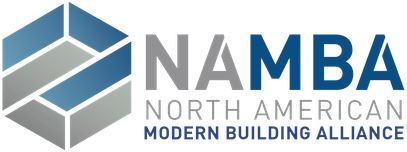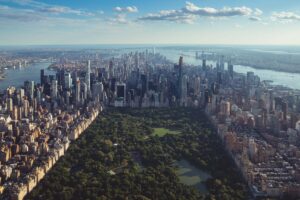On November 7, new exterior wall and exterior wall covering requirements will be in effect.
Why It Matters: The new requirements change how walls are designed, installed, tested, and inspected.
Confusion Regarding Documentation and Deviations
The 2022 NYCBC requires the applicant’s construction documents to provide design documentation of NFPA 285 tested assemblies from “the manufacturer”. This requirement presents a challenge. Exterior walls and exterior wall coverings are assemblies of multiple building products, supplied by several different manufacturers. There typically is no single “manufacturer” of a wall assembly or exterior wall covering. Therefore, the new language will highly likely lead to confusion in the marketplace without further guidance from DOB.
The new code also requires applicants to self-certify and document that any deviations from tested NFPA 285 assemblies have been evaluated and approved by the applicant of record or Registered Design Professional (RDP). Applicants are now responsible for identifying and rejecting any deviation that would result in an assembly that would fail to meet the acceptance criteria of NFPA 285. Unfortunately, there is no guidance defining what is or is not a deviation. This lack of guidance will lead to confusion for building product manufacturers, applicants, and RDPs.
Fireblocking is Required in Exterior Wall Coverings
The most significant changes in the 2022 NYCBC are in relation to fireblocking in exterior wall coverings. The changes include:
- New prescriptive triggers for fireblocking of exterior wall coverings that even include wall coverings that contain certain water-resistive barriers and non-combustible continuous insulation with limited exceptions
- New prescribed locations for fireblocking in exterior wall coverings that include vertical and horizontal fireblocking, and that fireblocking that extends from the wall sheathing to the backside of the exterior cladding
- New limitations on fireblocking materials permitted for use in exterior wall coverings (it remains unclear if special approval of other materials will also be limited to only noncombustible materials)
IMPORTANT NOTE: The 2015 IBC also required fireblocking of exterior wall coverings. However, an exception has been included for exterior wall coverings tested, without fireblocking, in accordance with and complying with the acceptance criteria of, NFPA 2851. This exception has been in the IBC since 2012 and is backed by decades of science-based representative large-scale fire performance testing.
NYC Requiring NFPA 285 Tests to Include Fireblocking
The NYCBC now requires tested assemblies to include fireblocking as required by the NYCBC. In Buildings Bulletin 2022013 (Issued 09/06/2022)2, DOB clarified that NFPA 285 test specimens, “… are required to be representative of the intended exterior wall covering to be installed, including the type and location of fireblocking used in the NFPA 285 tested assembly.”
The bulletin also states that, “During testing, it shall be the manufacturer’s responsibility to ensure that the tested fireblocking location is consistent with the intended use […].” As previously stated, there typically multiple products from multiple manufacturers in an assembly and there is no guidance currently available clarifying what, or who, is meant by “manufacturer” in the context of the NYCBC and NFPA 285 testing and design documentation. This language creates added challenges for manufacturers and confusion about which “manufacturer” is “responsible”.
DOB Buildings Bulletin 2022-013 also says it is acceptable to relocate fireblocking in an exterior wall covering from its original tested location. This guidance from DOB conflicts with guidance provided in the most current edition of the NFPA 285 test standard3.
Combustible Materials Are Prohibited in Certain Locations
The 2022 NYCBC contains new requirements prohibiting the use of combustible materials and combustible exterior wall coverings in or on balconies and similar projections, and in walls abutting balconies (vertically and horizontally). Additionally, combustible materials are also prohibited, with limited exceptions, as the outermost surface of an exterior wall covering when retrofitting existing non-sprinklered high rise buildings.
Special Inspections
The 2022 NYCBC adds new Special Inspections. The applicant is now required to collect and provide information for verification by Special Inspection of exterior wall assemblies and exterior wall coverings. The scope of these new Special Inspections include conformance with approved NFPA 285 design(s), installation, and location of fireblocking, water-resistive barrier installation, and thermal barrier installation and type, among other items.
Impacts of These Changes in NYC
The new NYCBC requirements and DOB guidance will have immediate and direct impacts on projects required to comply with the 2022 NYCBC. Impacts may include, but are not limited to:
- Limited availability of NFPA 285 tested assemblies that contain NYCBC-compliant fireblocking
- Increased complexity of exterior wall assembly designs, detailing, and installation
- Increased need for designer / supplier collaboration on assembly design and fire performance testing
- Shifting and confusion of responsibilities among applicants, architects, registered design professionals, and building product manufacturers
- Increased project costs and timelines
1NFPA 285-2012 Standard Fire Test Method for Evaluation of Fire Propagation Characteristics of Exterior Non-Load-Bearing Wall Assemblies Containing Combustible Components 2Available directly from NYC DOB at https://www1.nyc.gov/assets/buildings/bldgs_bulletins/bb_2022-013.pdf 3NFPA 285-2023, Annex B – Guide for Extensions of Results of Assemblies that Meet NFPA 285 Test Requirements

 New requirements for exterior walls and exterior wall coverings in the 2022 New York City Building Code (NYCBC) are significantly different than the 2014 NYC BC and the model 2015 International Building Code® (IBC) upon which the 2022 NYC BC is based. The new requirements increase the complexity of design and testing of exterior wall assemblies and exterior wall coverings. The new code and guidance from NYC Department of Buildings (DOB) have important implications for architects and registered design professionals practicing in NYC as well as for manufacturers of building materials and systems.
New requirements for exterior walls and exterior wall coverings in the 2022 New York City Building Code (NYCBC) are significantly different than the 2014 NYC BC and the model 2015 International Building Code® (IBC) upon which the 2022 NYC BC is based. The new requirements increase the complexity of design and testing of exterior wall assemblies and exterior wall coverings. The new code and guidance from NYC Department of Buildings (DOB) have important implications for architects and registered design professionals practicing in NYC as well as for manufacturers of building materials and systems.